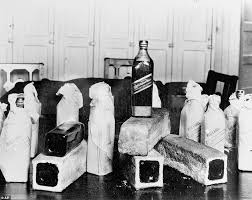
Breaking News
 Here it is: Seditious conspiracy -- captured on videotape in just thirty-eight seconds.
Here it is: Seditious conspiracy -- captured on videotape in just thirty-eight seconds.
 I have received a hard copy of the report on JFK's assassination from the Ambassador of Russia..
I have received a hard copy of the report on JFK's assassination from the Ambassador of Russia..
 Black-?Market Activism: Agorism and Samuel Edward Konkin III
Black-?Market Activism: Agorism and Samuel Edward Konkin III
 Satellites Are Leaking the World's Secrets: Calls, Texts, Military and Corporate Data
Satellites Are Leaking the World's Secrets: Calls, Texts, Military and Corporate Data
Top Tech News
 3D Printed Aluminum Alloy Sets Strength Record on Path to Lighter Aircraft Systems
3D Printed Aluminum Alloy Sets Strength Record on Path to Lighter Aircraft Systems
 Big Brother just got an upgrade.
Big Brother just got an upgrade.
SEMI-NEWS/SEMI-SATIRE: October 12, 2025 Edition
 Stem Cell Breakthrough for People with Parkinson's
Stem Cell Breakthrough for People with Parkinson's
 Linux Will Work For You. Time to Dump Windows 10. And Don't Bother with Windows 11
Linux Will Work For You. Time to Dump Windows 10. And Don't Bother with Windows 11
 XAI Using $18 Billion to Get 300,000 More Nvidia B200 Chips
XAI Using $18 Billion to Get 300,000 More Nvidia B200 Chips
 Immortal Monkeys? Not Quite, But Scientists Just Reversed Aging With 'Super' Stem Cells
Immortal Monkeys? Not Quite, But Scientists Just Reversed Aging With 'Super' Stem Cells
 ICE To Buy Tool That Tracks Locations Of Hundreds Of Millions Of Phones Every Day
ICE To Buy Tool That Tracks Locations Of Hundreds Of Millions Of Phones Every Day
 Yixiang 16kWh Battery For $1,920!? New Design!
Yixiang 16kWh Battery For $1,920!? New Design!
 Find a COMPATIBLE Linux Computer for $200+: Roadmap to Linux. Part 1
Find a COMPATIBLE Linux Computer for $200+: Roadmap to Linux. Part 1
A VERY Dry January! Stunning photographs show how America's ban on alcohol took effect...

It is hard to imagine in a happy hour, White Claw-obsessed kind of world, but 100 years ago a ban on alcohol went into effect across the United States.
The 18th Amendment, which prohibited the 'manufacture, sale, or transportation of intoxicating liquors,' began on January 17, 1920 and ushered in the era known as Prohibition. The push to put an end to Americans drinking was a decades-long effort led by women like Carrie Nation, who wielded her hatchet to smash up saloons.
Prohibition gave rise to perilous, sometimes blind-inducing bathtub gin served at secret clubs called speakeasies and empowered organized crime, making the mafia unfathomably rich with gangsters like Al Capone earning, by some estimates, hundreds of millions of dollars a year in bootlegging and other illicit activities. Gang violence reached its pinnacle on Saint Valentine's Day Massacre on February 14, 1929 when seven men were shockingly gunned down in Chicago.



